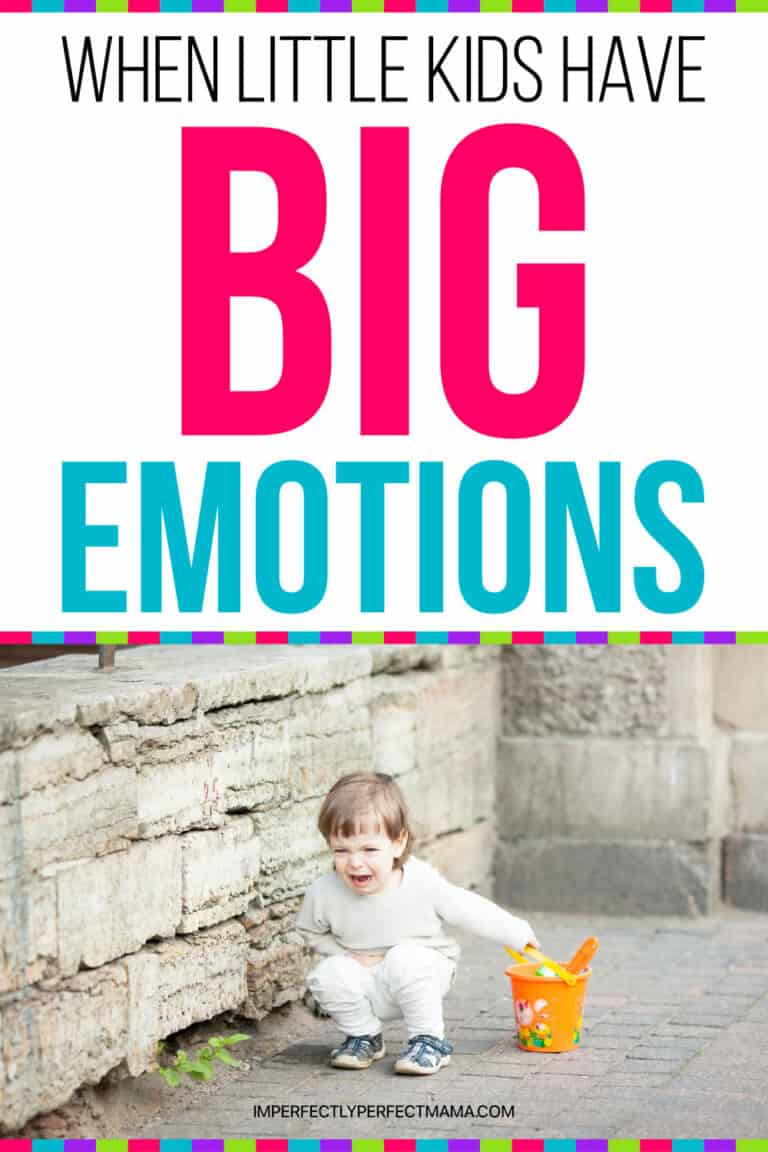I have three kids who are all very different.

I would call my first-born “strong-willed” and would often battle head-to-head in a contest of “Most Stubborn.”
These moments were frustrating to say the least yet they did not prepare me for what my second-born would bring to the mix.
He is a boy of big emotions.
At four-months old, he found his lungs and has not stopped yelling since.
Whatever he’s feeling, the entire room knows it, and it can be incredibly challenging to not let the many maddening moments of crying and yelling to not take the joy out of the day.
Here are a few things that I have tried and learned that help navigate the meltdowns, tantrums, and tears (mine!) that inevitably fill a young family’s home:
1. Be the Calm in Their Storm
This is going to be tough, especially if you’re an empath like me.
Find some grounding by taking a deep breath or humming a song to detach yourself from the emotion of the moment.
You need to model self-regulation in their moment of chaos and come from a place of reason.
2. Deflect
This works specifically for toddlers.
If you see them starting to unravel, see if you can distract them with a pretty bird out the window or a silly voice as you talk with them.
A little fun can go a long way!
3. Get Down on Their Level
Get down on your knees so you are eye to eye.
This helps you to better connect and stay approachable.
Be present with them. Don’t send them away to face the storm alone. Be there ready for them.
Model deep breathing and ask them to join you.
4. Know Their Needs
Some kids need space, others need touch.
Know which one your kid needs and offer it when you can.
There will be a trial and error period so be patient with the process.
Be there, ready, and offer them a hug, a drink, a hand to hold, a song to sing, etc.
5. Teach Self Regulation When Things Are Calm
A picture book or TV show can be a springboard for this moment.
Find a book or a show that talks about anger, or point out a character that showed anger (“Daniel Tiger’s Neighborhood” is my go-to).
Talk about techniques you can use together when the feelings get too much, such as using a calm jar, giving yourself a hug, yoga, deep breaths, drawing a shape on your leg with your finger, or repeating a phrase (“I am safe”).
6. Let Them Have Their Moment
This may make you late for swimming lessons but is that really the end of the world?
Let them work it out in their time.
When they are calm, you can do the parenting/disciplining that needs to be done.
Nothing will be accomplished in the moment with both of you allowing your emotions to take the lead. Emotions are bad leaders.
You can always circle back once the emotional storm has passed.
7. Reconsider Discipline
Should we be giving consequences to kids for having emotions?
Little kids can have big emotions and they are all valid.
They should feel safe to feel anyway they feel.
They will not learn to self regulate or feel safe if we punish their feelings. Feelings are not wrong in themselves.
Punish the behavior (kicking, biting, etc) but nurture healthy emotional expression.
8. Grace, Grace, Grace!
Are you going to handle it perfectly every time? Of course not. (My own success rate is about 50%!).
This will take practice for you as well as for your child.
Every experience, whether you handled it correctly or not, is another opportunity to connect with your child and grow your relationship.
The times you get it wrong can prove to be a great lesson for your child as they learn that even adults struggle with regulating their big feelings!
9. When It’s Too Much
If a child is harming others, or if you haven’t been able to find the right technique for your child, consider a family therapist or child psychologist.
They have a world of knowledge at their fingertips to help guide your family on the right paths.
You don’t need to struggle alone.
Talking about feelings with your young children, and teaching ways to help them settle themselves, will help diminish the meltdowns and will set them up for success as they develop.
Model self-regulation as best as you can and be present to help them navigate the strong, new feelings that come with growing up.




2 Comments